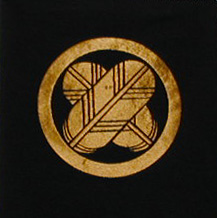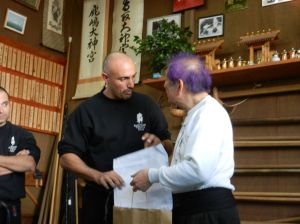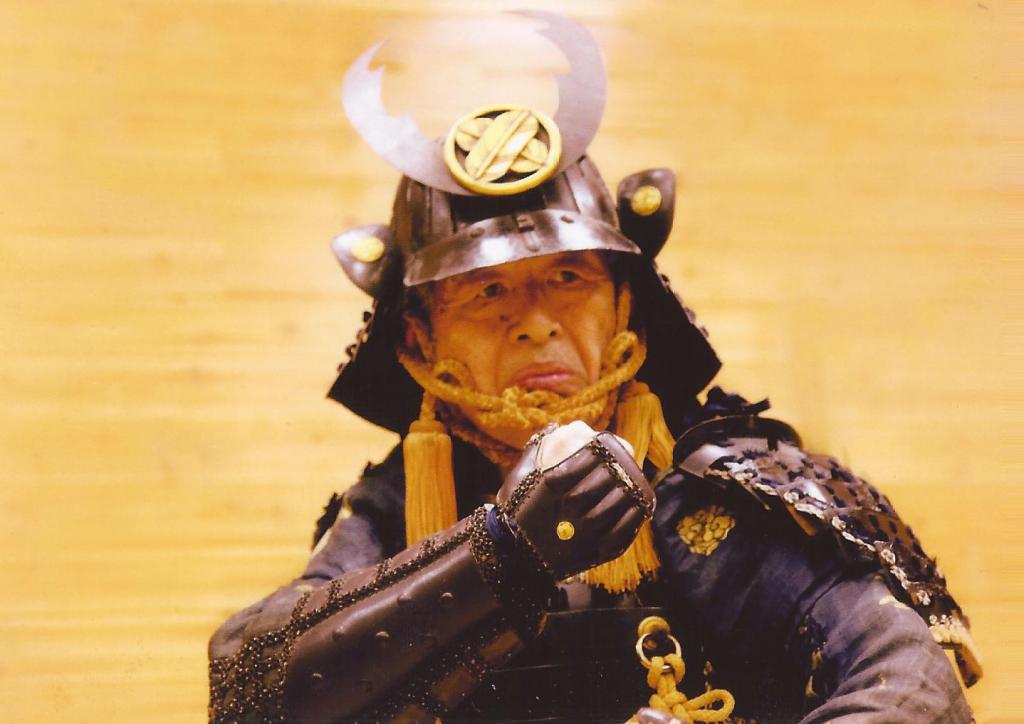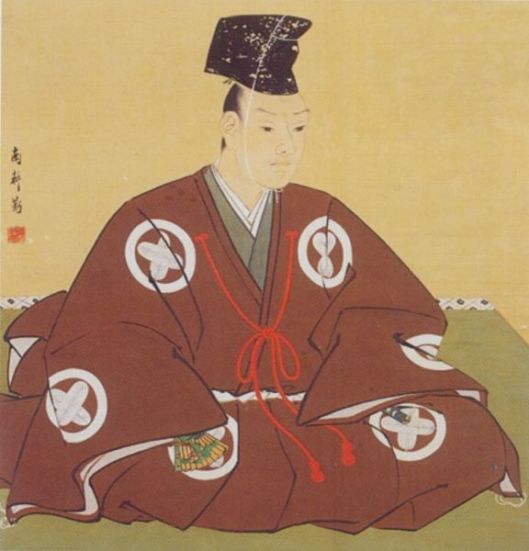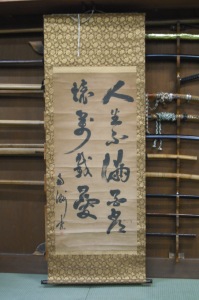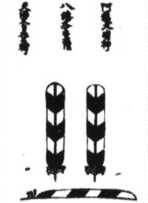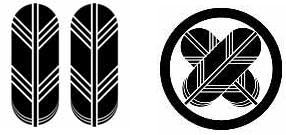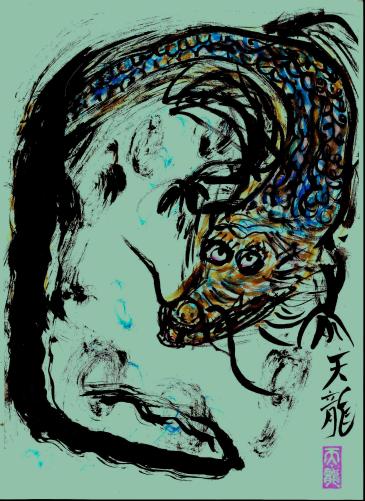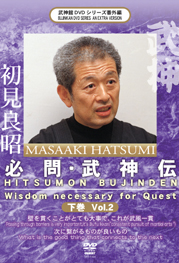For the learning process of this secret, there is an initiation ceremony through the sixth sense, allowing the student to learn this strange technique. The student, dressed in white clothes, sitting motionless in an open room. The Master, like a shadow, without making any noise, attacks the student with a sword, as a floating boat. If the student dodges the sword, he got the secret, but if not, then that was it. There is a similarity between this and the artist who destroys his new work if he didn`t like it.
One day I was sitting in my master’s room when he told me: “wait here with your eyes closed, and do not open them, no matter what happens”, I relaxed and felt him leave the room. Suddenly, I made a side roll after I felt certain presence and I saw a shadow as if my body was splitted in half. Then I made a forward ukemi, after I felt that my head flew away. When I returned to Shizen Fudoza, I opened my eyes when I heard his voice said: “well done; you may open your eyes”. Then I say Takamatsu Sensei standing with a sword on his right hand. Being incredibly steady, I realized that this was the spiritual technique through the sixth sense. Then I received the sword of my master. Later on I was told that this was “Juji Giri Mumei no Itto”.
A year before Takamatsu Sensei died, he told me, “I let the Martial Arts in your hands.” Nine years since he died, and I’ve been training hard, and lately, I can say that this is the true Budo. By the way, in the test for Godan in the Bujinkan Dojo, I attack with determination from behind the student who is sitting, with his eyes closed. If he dodges, he passes. This is the beginning. Not only dodge an attack from behind. Sometimes you have to know the other side of the world. In human relations, the person you trust could betray you someday. Even then, you can realize the value of peace with this training. It is just a deception to cultivate only the sense , that will allow you to dodge an attack from behind. This kind of mentality creates a distance between you and the truth of life, and ruins it. That kind of mentality is the cancer to correct the growing. In this sense Juji Giri Mumei no Itto, is the operation to remove the cancer in the early stages. It can also be taken as one should stop teaching the person should not be taught.
When you teach many students, some kind of sense is important. Buddha taught ten followers, but one failed.
One of the 12 apostles of Christ, was a rebel.
Even a relationship between the Master and student, has a flaw. The relation between teachers and students, in a modern school system is bad. In these situations, the most important principle endures: Learn the mind of true Martial Arts.
When you pass the test for Godan, the way of training will necessarily change. Changes to a invisible training; incomprehensible training. I teach students who have been training for over 20 years, but only cordially. It could be the instruction of incomprehensibly strange techniques for them. They understand it, but they can`t do it. Apparently they may understand, but really don`t understand. Thus, the strange techniques start breathing . It’s ACCEPTABLE for me, if they don`t understand, because I am teaching incomprehensible techniques. If they understood, they would be Superman. They will improve, because they do not understand.
One day, one of my more graduated students, came up to me and said: “I heard out there, that there`s a technique that allows us to throw the opponent without touching. – “I decided to try and teach this, avoinding my students from getting hurt. I, along with the student and four other students, went to a place that had a video camera. Nine eyes are staring. “Forward” “Yes sir.” One passes to the other. My student, flew over me and fell. A few minutes later, he got up with blood coming out of his mouth. “Understand?” “No sir.” The “rest of you understand?” “No Sensei, but we believe that we will, when we see the video.” “You won´t understand,” I told them. We watched the video, but none of the students could capture the moment in his eyes. This is a Martial Art. It is impossible to learn the stranges techniques taking photos and writing. Another way of looking at this is that if you show your techniques in a makimono and it is stolen, doesn´t matter. This is the essence of Martial Art. Take pictures or write, is useless. No other way to study under the teaching of a Master and do what he says.
In the opportunity of publish this book, I present for your information, the book that Takamatsu Sensei had taught me. As a rule of this Ryu, it is forbiten to write down. Because if you write, the depth of its essence ends. The Martial Arts will be the secret without limitations. That is, to write this book, it is against my will. Even if I write the explanation for a future study, nobody truly learn. As Takamatsu Sensei said, “learn through hard training.”
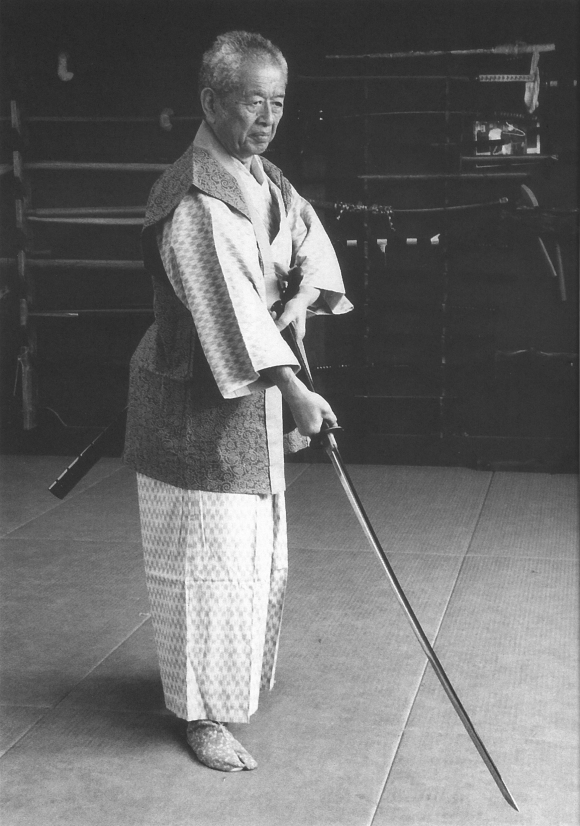
A year before his dead, Takamatsu Sensei told me: “now you are a good Martial Artist. I have been rewarded the favors of my Masters”
I was half in doubt. I thought you could master the essence of a martial art, a few years after being taught. Since Master died, I’ve been wondering for nine years, and now I decided to publish this book. One day, I talked to a driver who lived in the U.S., that the expression of the Martial Arts, through writing, was like a sheet with musical staves. Martial Art has grown from unlimited space of zero, which was kept on paper. Even if the computer was developed to store all the information, I couldn´t figure zero. Even if it did, they could not put pressure on foreign techniques of zero without reaching the stage of constant power of Martial Arts. The Martial Artist’s dream is to live there.
Soke Masaaki Hatsumi
Book Hiden Togakure Ryu Ninpo









